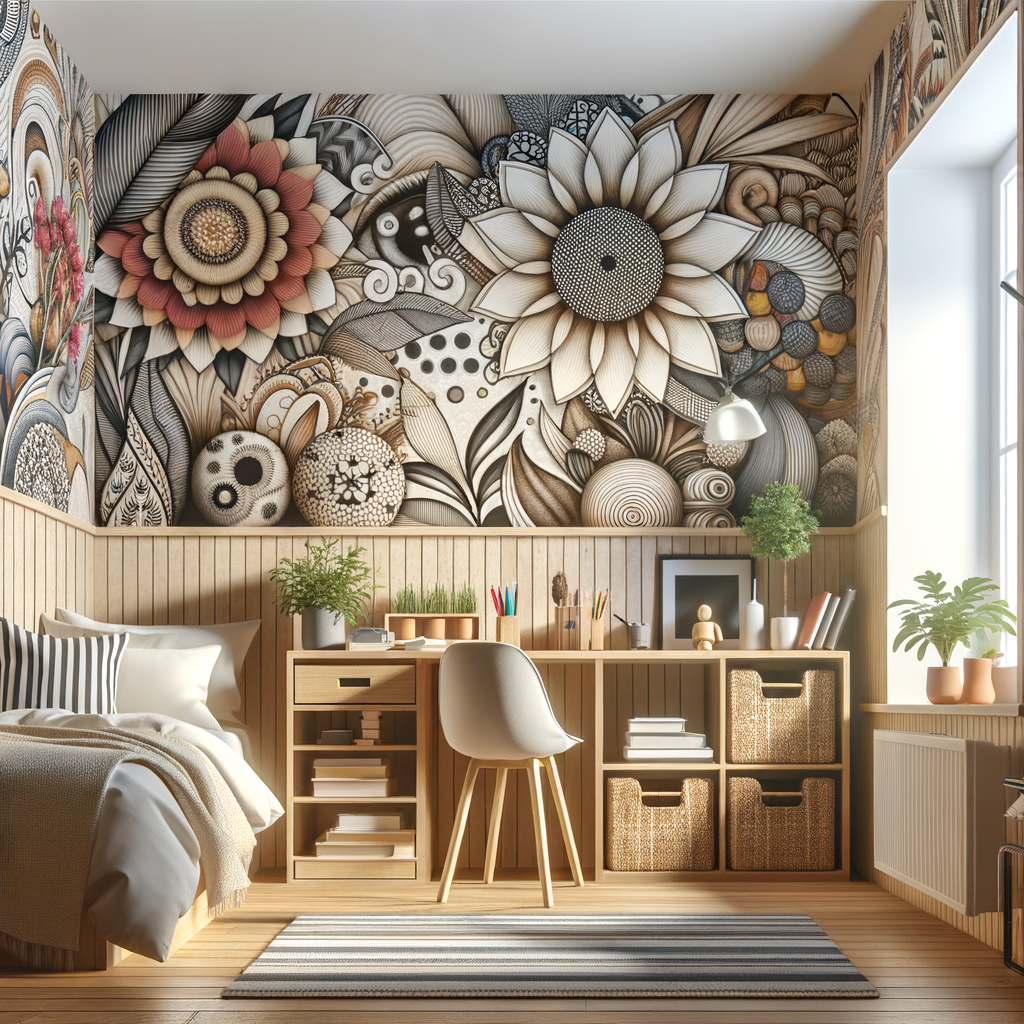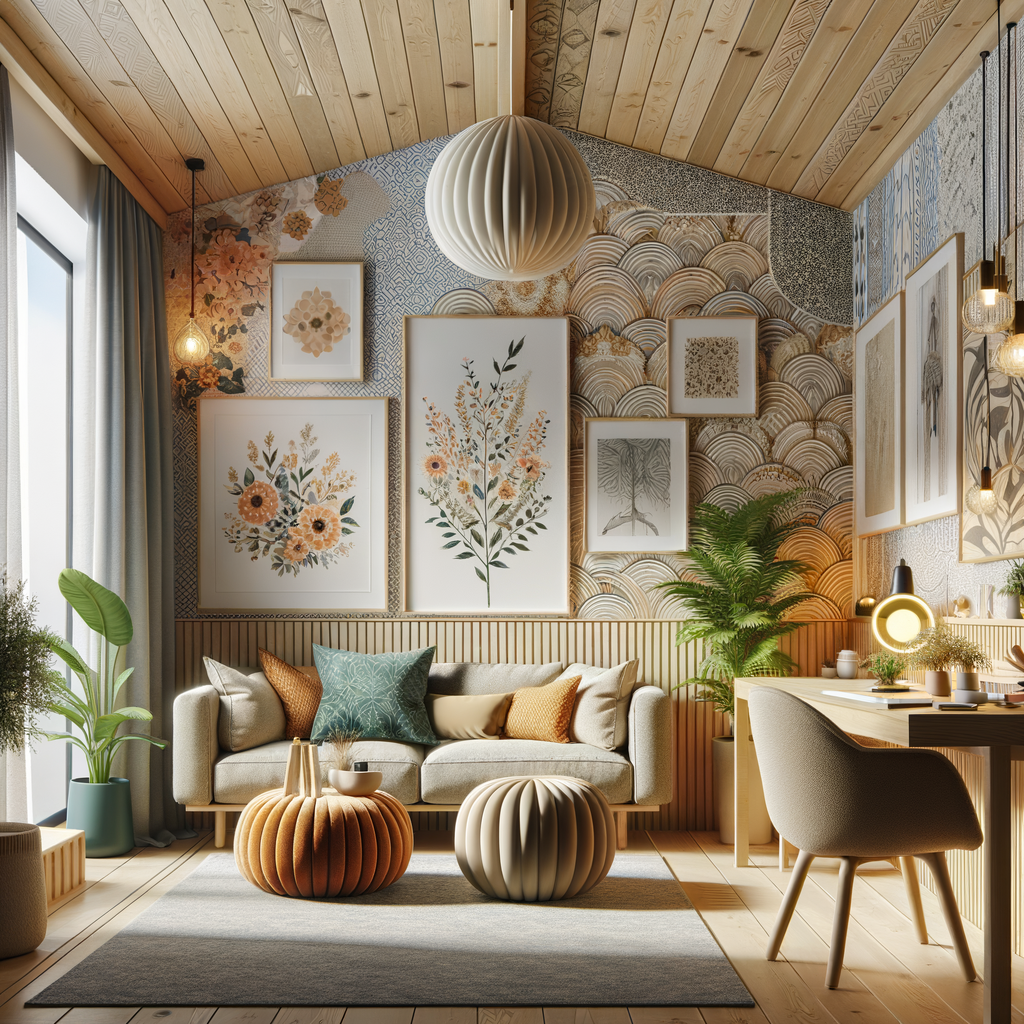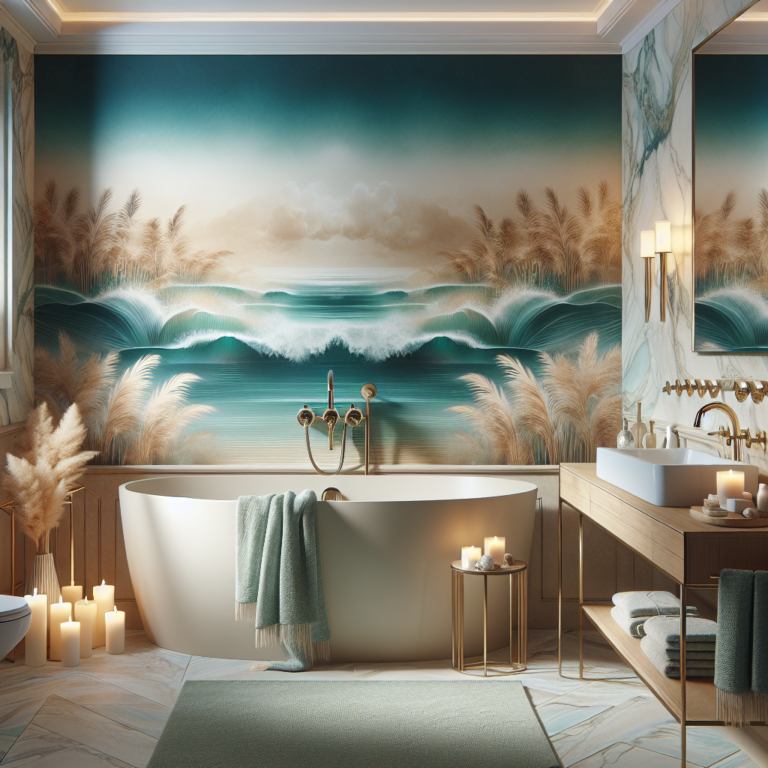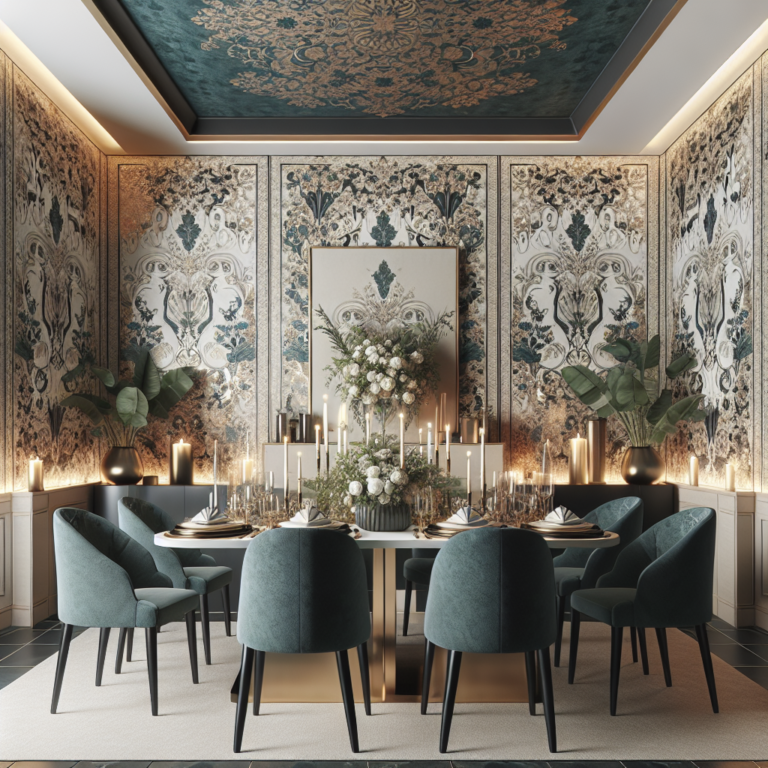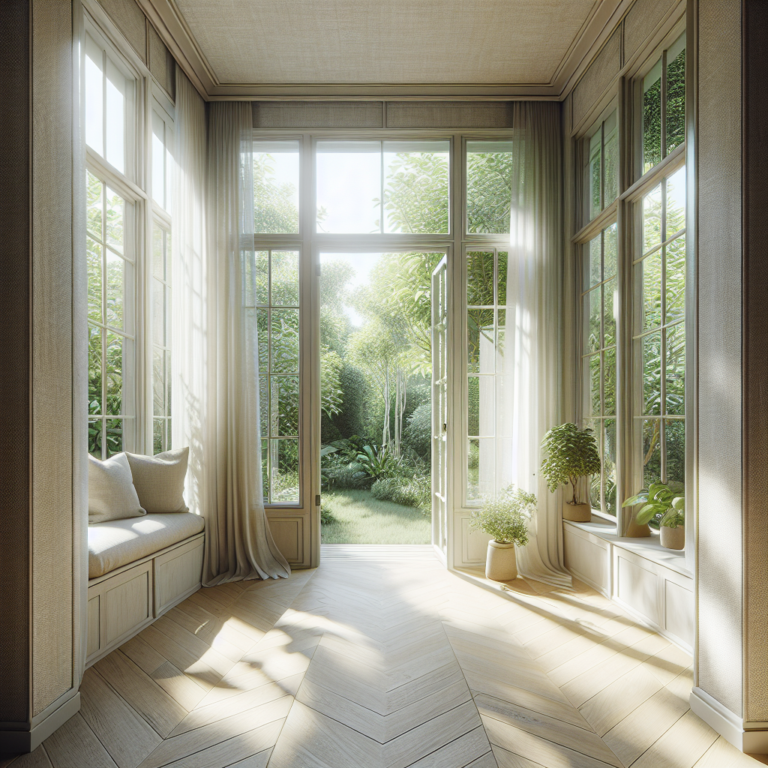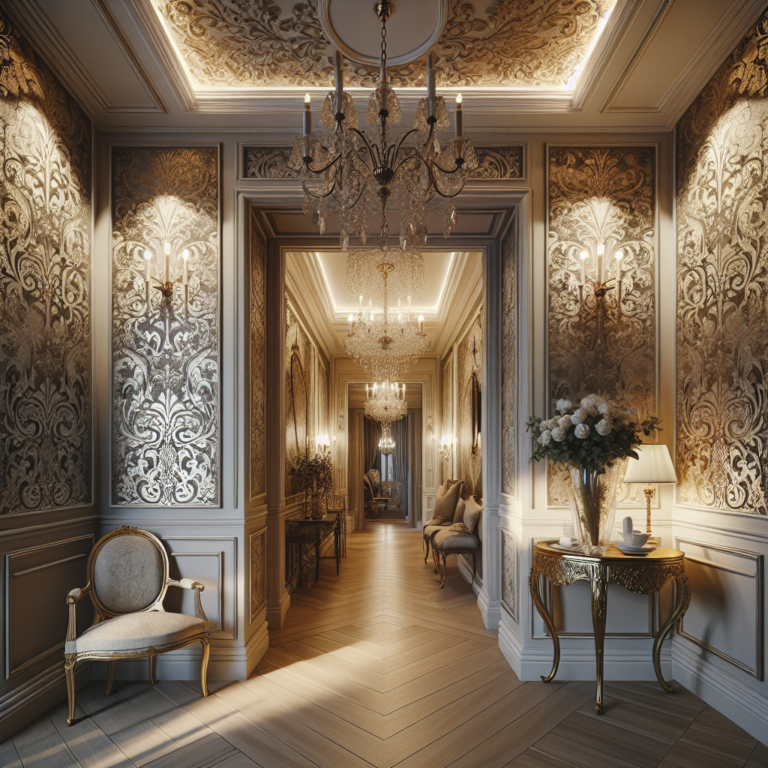Brighten Up Small Spaces with These Creative Wallpaper Ideas
Understanding the Impact of Wallpaper in Small Spaces
Wallpaper is often overlooked as a crucial design element, especially in small spaces. Many people stick to plain paint, thinking it’s the only option for limited areas. But in reality, the right wallpaper can transform a cramped room into an inviting and visually appealing sanctuary. It’s not just about aesthetics; wallpaper can create an illusion of space, add depth, and incorporate personality into your environment. When considering wallpaper, think of it as a potential canvas that can amplify the essence of a room, pulling together other design elements.
Additionally, different textures and patterns can redefine how we perceive space. For instance, vertical lines can make a room feel taller, while bright and vibrant patterns can create energy and focus. Understanding how these factors interact with light and shadow is key to utilizing wallpaper effectively. It’s all about selecting a design that resonates with the mood you want to convey while making the best use of the area available.
Choosing the Right Color Schemes
The color scheme you choose is vital when it comes to wallpaper in small areas. Lighter colors tend to open up space and reflect more light, giving the illusion of a bigger area. Soft pastels or whites can create a serene environment, while bolder colors might work in certain applications, such as an accent wall. Consider how light enters the room; if it’s limited, then lighter colors might be your best bet.
On the other hand, don’t be afraid of color. Using a chic wallpaper with a strong hue can add vibrancy and life to a small space. The key lies in balance; combining bold wallpaper with light furniture can help prevent the room from feeling overloaded. This interplay will allow you to maintain a visually appealing space without it becoming too chaotic.
Patterns that Enhance Space Perception
Patterns are a fantastic way to elevate the look of small spaces. Geometric designs, for instance, can create a sense of structure and order, while floral patterns might inject warmth and comfort. Think about the mood you want your space to portray. For example, using subtle and repetitive patterns can create continuity in the room, making it feel more spacious than it is. Choose patterns that are appropriately scaled to the space you’re working with to avoid overwhelming the area.
In addition, focus on patterns that draw the eye upward or outward. Horizontal stripes can widen a space, while vertical stripes imbue a sense of height. Opting for larger designs can also generate a focal point, making the room feel thoughtfully curated. By selecting patterns with these principles in mind, you can effectively make your small spaces appear larger and more inviting.
Textured Wallpaper for Added Dimension
Texture can be the secret ingredient for turning a bland room into something special. Textured wallpaper brings more than just a visual benefit; it can also add a tactile quality that can make a space feel cozy and inviting. Consider materials like grasscloth or embossed designs which give depth and sophistication, making your walls feel less flat and more dynamic. Textured wallpapers can also play with light, creating shadows that add further complexity to your small area.
Moreover, using textured wallpaper can help mask imperfections in your walls, a common issue in older homes. It can smoothly disguise uneven surfaces or minor damage, allowing you to overlook those little flaws. By incorporating textured wallpaper, you not only elevate your design aesthetic but also provide practical solutions in understated ways.
Accent Walls: Focal Points that Dazzle
An accent wall can be a game-changer in small spaces. It allows for a burst of creativity without the overwhelming effect of wallpapering an entire room. This strategy can significantly impact perception, creating a stunning focal point that draws the eye and enhances the overall decor. Select a wall that naturally attracts attention, like behind a bed or a sofa, and unleash a striking wallpaper design that speaks to your style.
This method works wonderfully with both bold patterns and colors. It can also serve to define areas within an open-concept space. For example, you could use one type of wallpaper to differentiate living spaces, creating a sense of separation without the need for physical barriers. An accent wall speaks volumes about personal style while providing a unique twist to conventional room layouts.
Tips for Applying Wallpaper in Tight Spaces
Applying wallpaper in small areas can be tricky, but with the right techniques, it can be a rewarding process. Start with proper measurements to avoid unnecessary waste; using a bit of painter’s tape can help you visualize how the wallpaper will look before you commit. You might also consider hiring a professional if the area seems too complicated, especially with intricate patterns or high ceilings.
When it comes to application, proper adhesive choice is crucial for ensuring longevity. Make sure to select a wallpaper that suits your space’s moisture levels, particularly in areas like bathrooms or kitchens. Using removable wallpaper can be a fantastic option for renters or those who love to change their decor frequently. Experimenting with different designs can be fun and refreshing without the permanence of traditional wallpaper.
Incorporating Wallpaper in Functional Spaces
Don’t limit your wallpaper application to living or bedroom areas. Think creatively about functional spaces such as kitchens, bathrooms, or even closets. Wallpaper can add a charming touch to these often-overlooked areas, making everyday routines feel special. For instance, using bold patterns in a closet can transform it from a mundane storage area to a uniquely designed space where you enjoy getting ready.
In kitchens, consider using wallpaper that can withstand moisture but still adds personality. A playful print can create an inviting atmosphere, making meal prep feel less of a chore. In bathrooms, peel-and-stick options can give a refreshing look without the commitment, perfect for those who love to switch things up regularly. Function does not have to sacrifice design, and with wallpaper, you can have it all.
Maintenance and Longevity: Wallpaper Care Tips
Once you’ve applied your beautiful wallpaper, it’s essential to keep it looking fresh and vibrant. Different types of wallpaper require various maintenance techniques. For instance, vinyl wallpaper is generally easier to clean and more resistant to moisture, while fabric wallpaper might require more gentle care and occasional vacuuming to maintain its texture.
Regular dusting can go a long way in maintaining the integrity of your wallpaper, as it prevents dirt buildup. If your wallpaper gets stained or damaged despite your best efforts, know that many contemporary options are designed for easy installation and removal, allowing you to refresh your space without much hassle. This ease of maintenance makes wallpaper not just stylish but practical for everyday living, enhancing your small space while still being functional.
Conclusion
Creating an inviting atmosphere in small spaces is completely attainable with the right wallpaper. From selecting the right colors and patterns to utilizing texture and accent walls, there are endless possibilities for personalization. The beauty of wallpaper lies in its ability to express your unique style while maximizing space perception. With a little creativity and the tips discussed, your small area can become a bright and cheerful sanctuary that reflects your personality. So, what are you waiting for? It’s time to transform those cozy corners into joyful retreats!
FAQs
Can I use wallpaper in a bathroom?
Absolutely! However, make sure to choose moisture-resistant wallpaper like vinyl. It can add style while holding up against humidity.
What types of wallpaper are best for small spaces?
Lighter colors and subtle patterns usually work best, helping to open up the space. Consider using textured wallpaper for depth without overwhelming the area.
How do I remove wallpaper easily?
Start by wetting the wallpaper with warm water, then gently peel it away. You can also purchase commercial wallpaper removal solutions for tougher jobs.
Are peel-and-stick wallpapers worth it?
Definitely! They offer flexibility for renters and can be changed easily without damaging walls, making them a great choice for many spaces.
Can I mix different wallpaper patterns in the same room?
Yes! Mixing patterns can create visual interest. However, it’s essential to keep a unifying element, like color or texture, to tie the designs together.
Below are some great examples of these types of designs: